This is our list of the world’s most powerful production cars, ordered from least to most powerful and including every current or upcoming production car we’re aware of – electric, hybrid or combustion – that claims to make more than 1,000 horsepower. Enjoy, and please tell us if we’ve missed anything, or if you spy something new! We’ll update the list regularly.
The Rezvani Tank X: “over 1,000” horsepower (combustion)
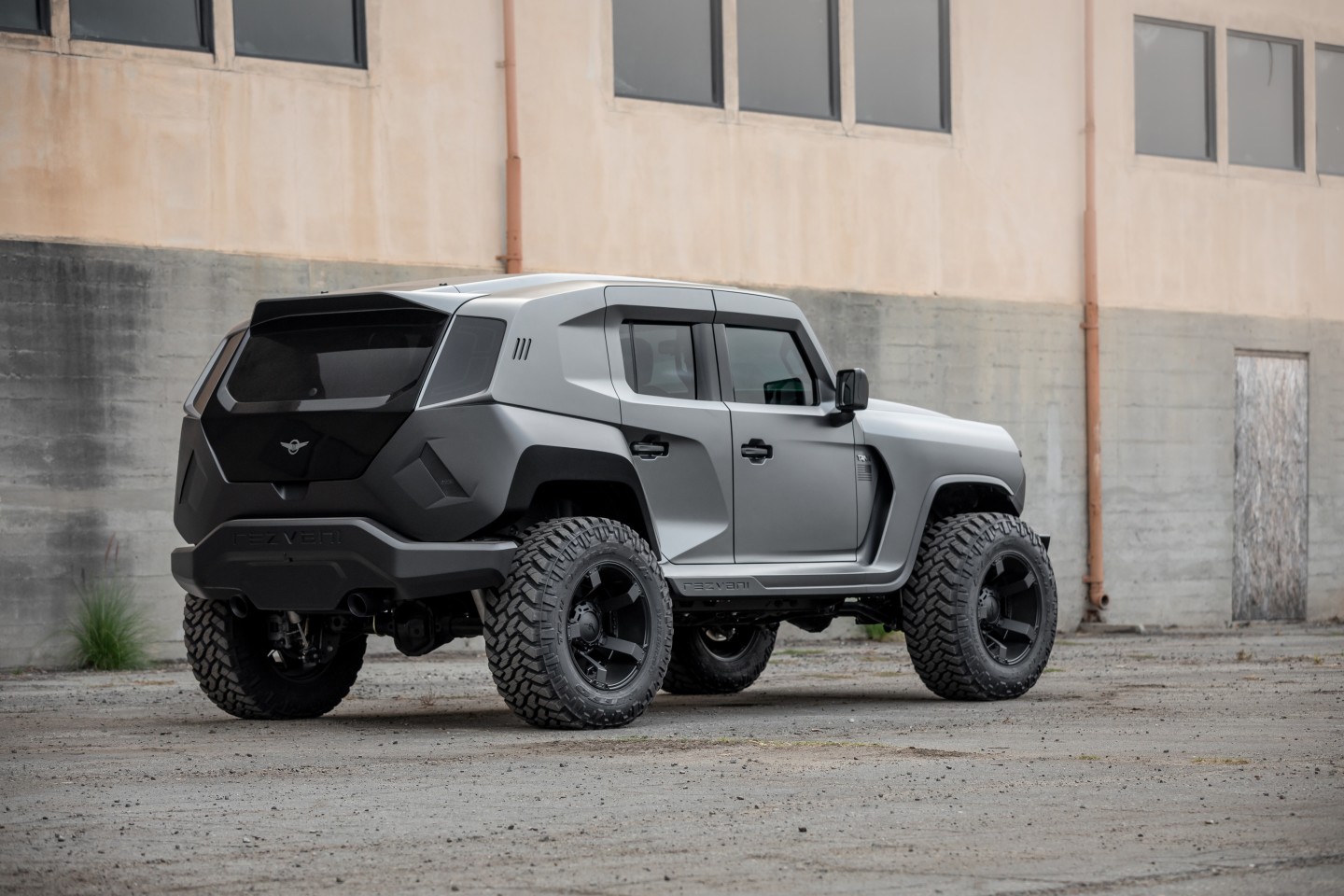
Rezvani
Well, here we are starting off our list of hyper-exotica with a freakin’ SUV. Or is it a tank? Rezvani has been building military-inspired Hummer-humblers for a long time now, and the Tank X takes things to a whole new level. This hulking, armored monster is powered by a 6.2-liter supercharged Dodge Demon V8, and can be specified with more ludicrous gadgets than any Bond car ever had. We’re talking smoke bombs, thermal vision, electrified door handles, tire-destroying caltrop droppers and plenty more. Perfect for popping out to get groceries in the Gaza strip.
Learn more about the Rezvani Tank X.
The GMC Hummer: 1,000 horsepower (electric)
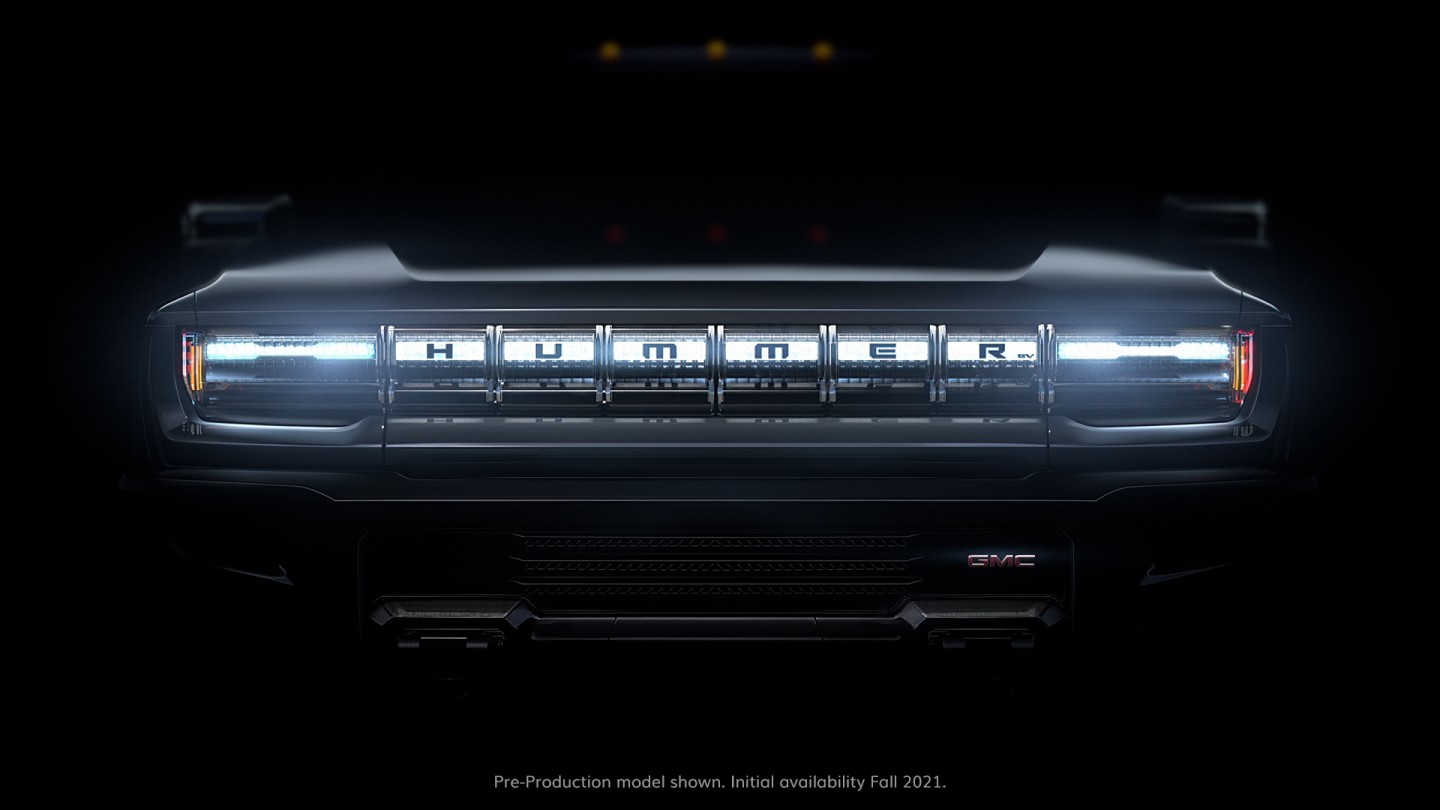
General Motors
When Arnold Schwarzenegger famously convinced AM General to make a road-going variant of its M988 Humvee in the early 1990s, it immediately earned a couple of different reputations. Among die-hard fans, it was famed for its military-grade toughness. Among anyone with a green bone in their body, it was best known as the pinnacle of wasteful American gas-guzzling. No more. Early in 2020, GMC announced it was re-releasing the Hummer as an all-electric powerhouse with a truly obscene 1,000 horses and a hilarious 11,500 lb-ft (15,590 Nm) of torque. Even more excessive than the originals, but with a touch more conscience. We don’t know what it’ll look like yet, but we suspect it won’t be a car for introverts.
Learn more about the GMC Electric Hummer.
The Mercedes-AMG Project One: 1,000 horsepower (hybrid)
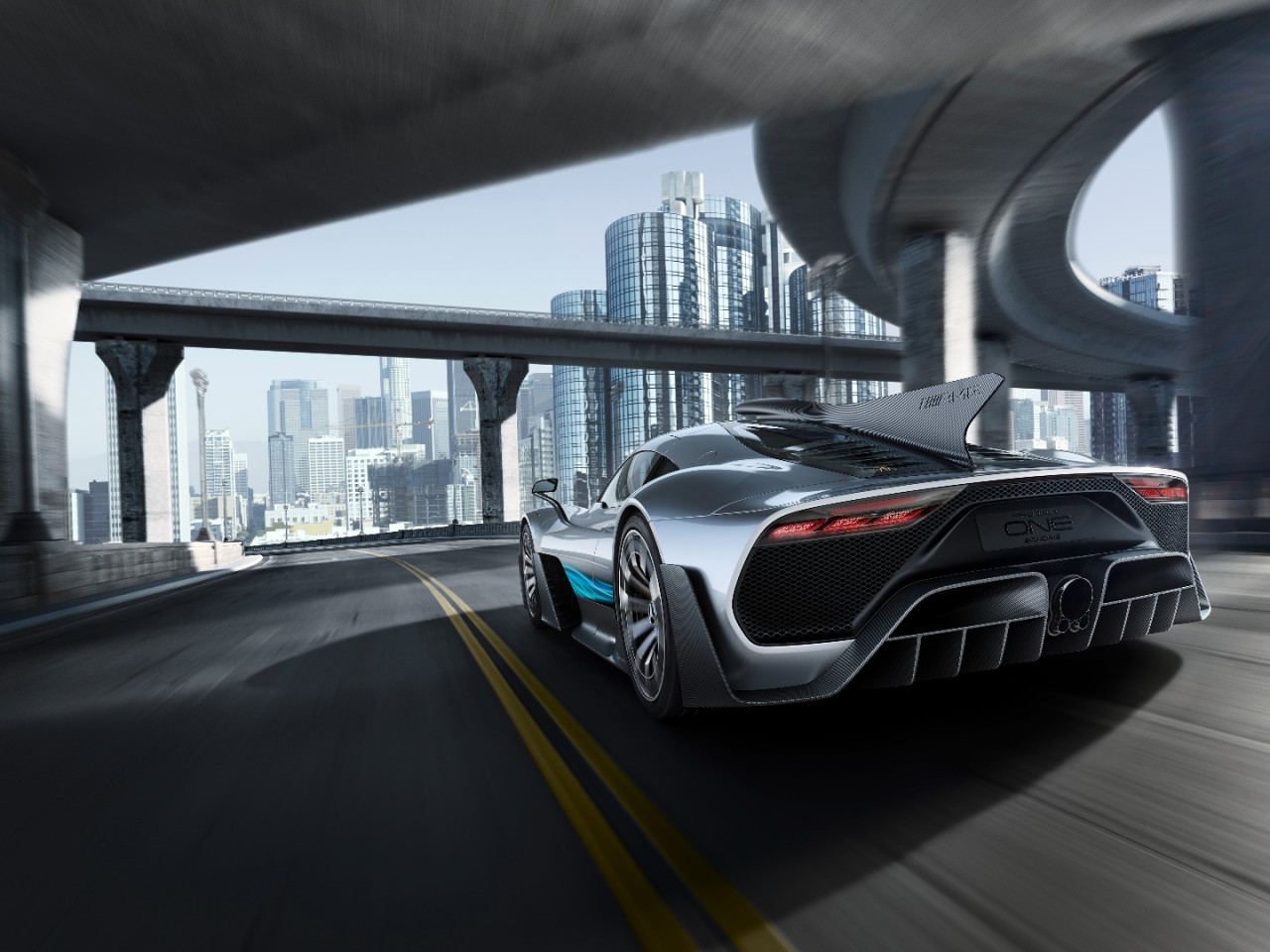
Mercedes-AMG
Priced at US$2.72 million, Project One is Mercedes-AMG’s vision of a Formula One car for the road, and a wildly interesting machine. Its 1.6-liter turbo engine is the smallest combustion unit you’ll see on this list, but insanely powerful for its size at 510 horsepower, thanks to a 90-kilowatt electric motor boosting the turbo to force-feed the engine. There’s another 120 kW electric motor on the crankcase, and these three motors combine their talents to operate on the back wheels. Up front, there’s a pair of powerful, 50,000rpm motors to drive the front wheels as well. It’s a heck of a powertrain – Mercedes says it’ll get from 0-124 mph (0-200 km/h) in less than 6 seconds and top out over 217 mph (350 km/h). Yummy.
Learn more about the Mercedes-AMG Project One.
The McLaren Speedtail: 1,036 horsepower (hybrid)
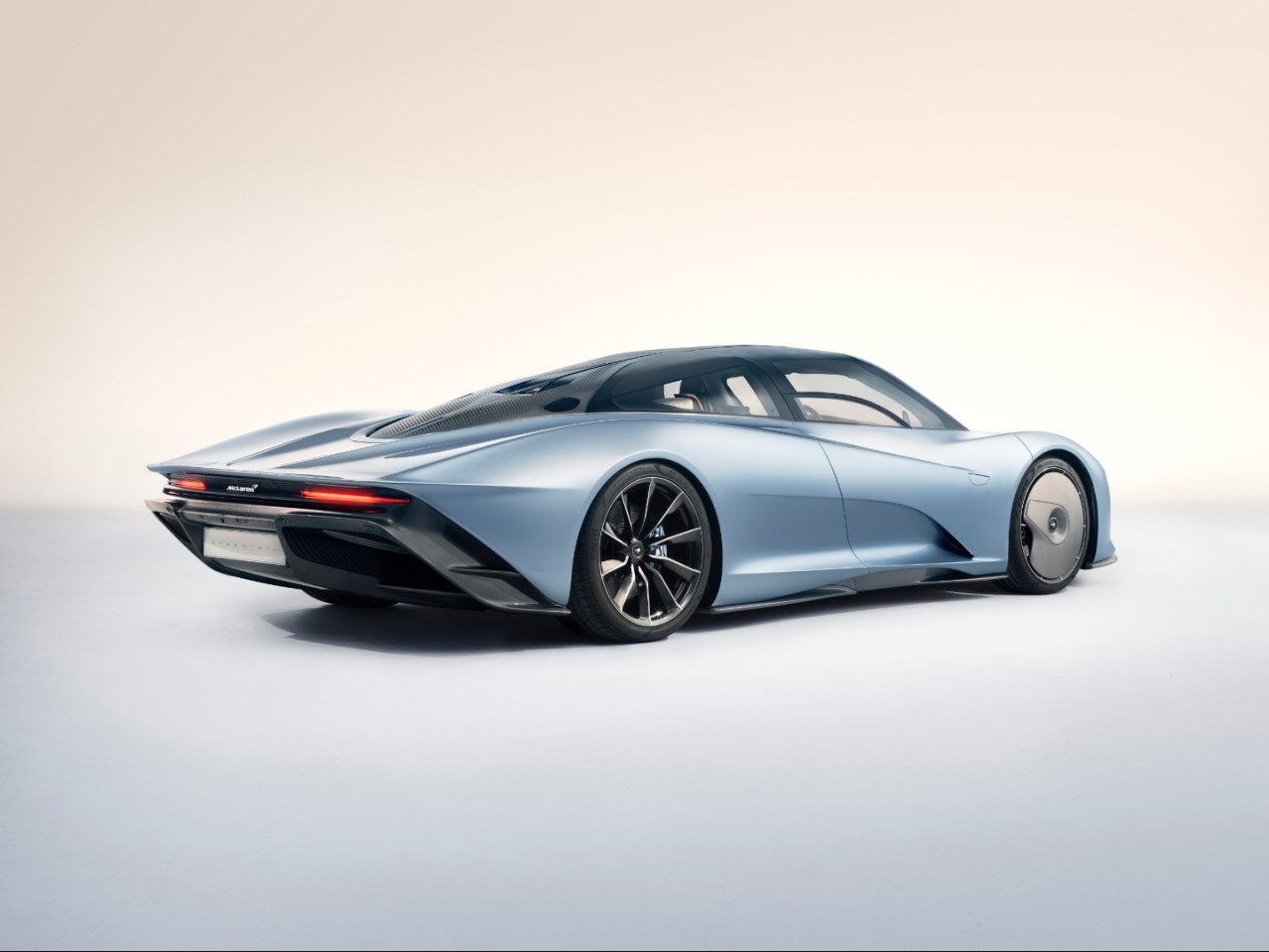
McLaren
The “spiritual successor” to the brand’s transcendent 1998 F1, McLaren’s Speedtail uses the same driver-focused three-seat cabin layout, with the driver front and center, and two passengers well back and out of the way. Conceived as a 250-mph ( 402-km/h) hyper-tourer, the Speedtail takes Frank Stephenson‘s sailfish-inspired design language to new aerodynamic heights with a super-slippery tapered teardrop tail, and flexible ailerons that hydraulically peel themselves upward when needed, in lieu of a spoiler. Amazing car.
Learn more about the McLaren Speedtail.
The Lucid Air: 1,080 horsepower (electric)
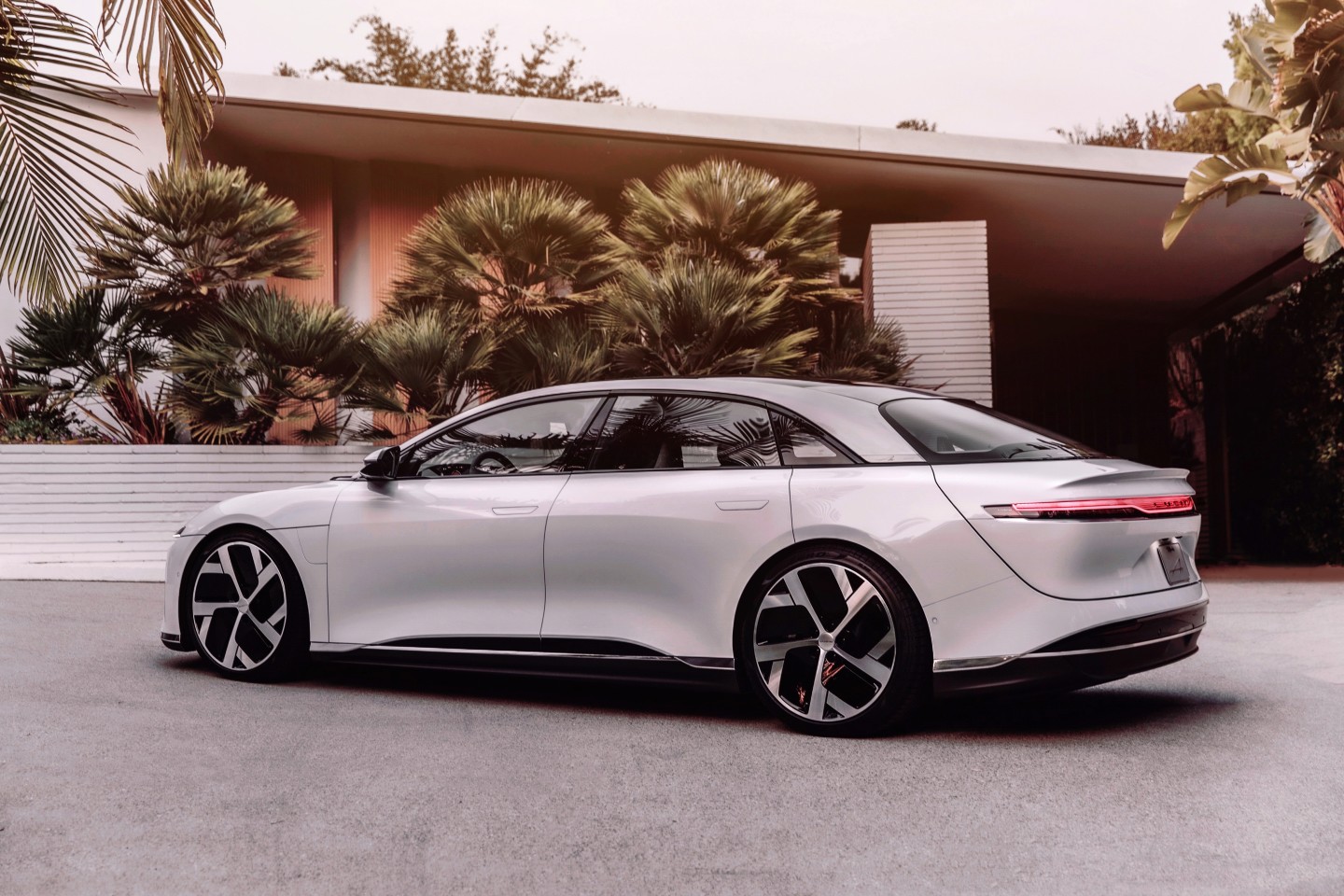
Lucid Motors
Well this is a bit weird and awkward. In a list you’d expect to be populated mainly by swoopy, bajillion-dollar European exotica sits this electric 4-door family sedan, weighed down by enough batteries to take you more than 400 miles (644 km) on a charge. Indeed, the design focus here is more about space and luggage capacity than outright tire-frying power, and yet even with the powertrain made as compact as possible, the top “Dream” spec edition pounds out a total of 1,080 horses, giving it a 0-60 mph (0-96 km/h) sprint time of 2.5 seconds, a quarter mile drag strip time of 9.9 seconds and a top speed of 168 mph (270 km/h). Probably the best number is $169,000, which is all it’ll cost before tax credits. A relatively affordable way to join the thousand-pony club.
More about the Lucid Air.
The Hispano-Suiza Carmen Boulogne: 1,100 horsepower (electric)
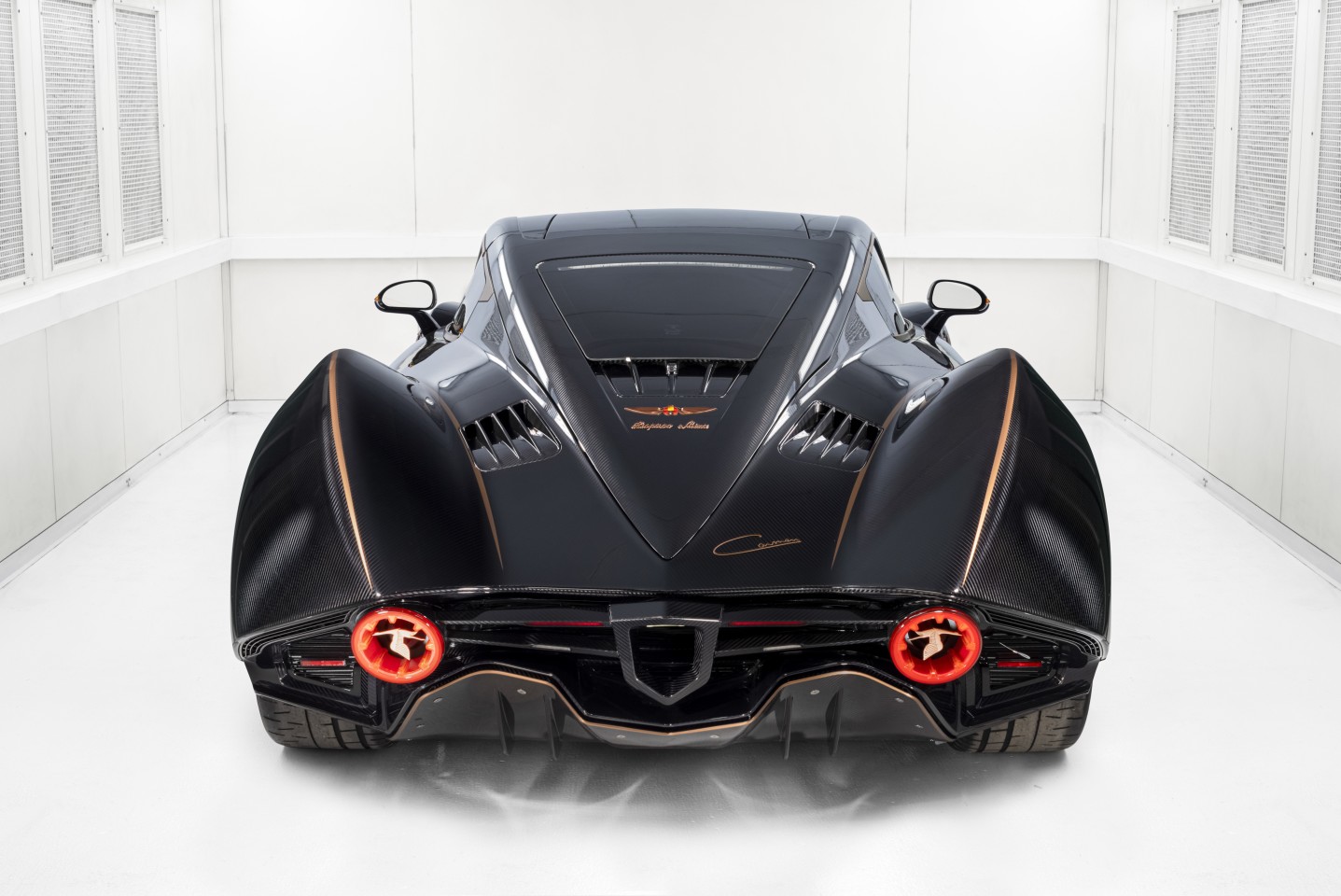
Hispano Suiza
The bootylicious back end of Hispano-Suiza’s Carmen has recently jumped up a spot on this list by adding a slightly higher-performance Boulogne variant with 1,100 horsepower instead of the original car’s paltry 1,019. A monster it may be, but the reborn Hispano-Suiza company says the Carmen is as much about exquisite luxury as it is about the crass business of going fast. Possessed of gull-wing doors and peppered with design cues that hark way back to the brand’s pre-1938 heyday, the Carmen uses one of the most carbon-intensive chassis designs yet seen. And whatever you might think of the wacky front of it, the backside is one of the peachiest we’ve seen.
Learn more about the Hispano-Suiza Carmen Boulogne.
The Delage D12: 1,100 horsepower (hybrid)
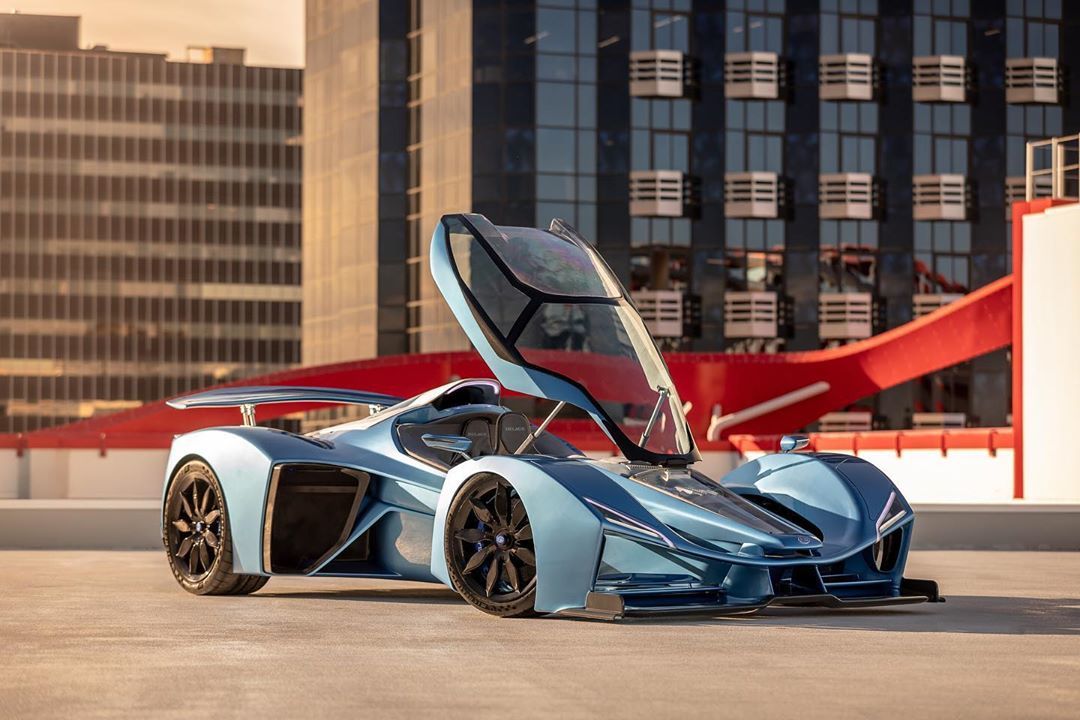
Delage
A Miami-based French entrepreneur has leased the rights to historic French brand Delage, which hasn’t made a car in more than 60 years, and is resurrecting it with this 1,100-horsepower hybrid widowmaker. The new Delage D12 rocks a massive 7.6-liter V12, naturally aspirated, with a further hybrid system to boost power and responsiveness. Its tandem cabin will be a nightmare for passengers, but this is a single-minded machine with the Nurburgring Nordschliefe lap record squarely in its sights and ex-F1 champ Jacques Villeneuve as its chief development driver. Yours for a cool US$2.3 million.
Learn more about the Delage D12.
The Aria FXE: 1,150 horsepower (hybrid)
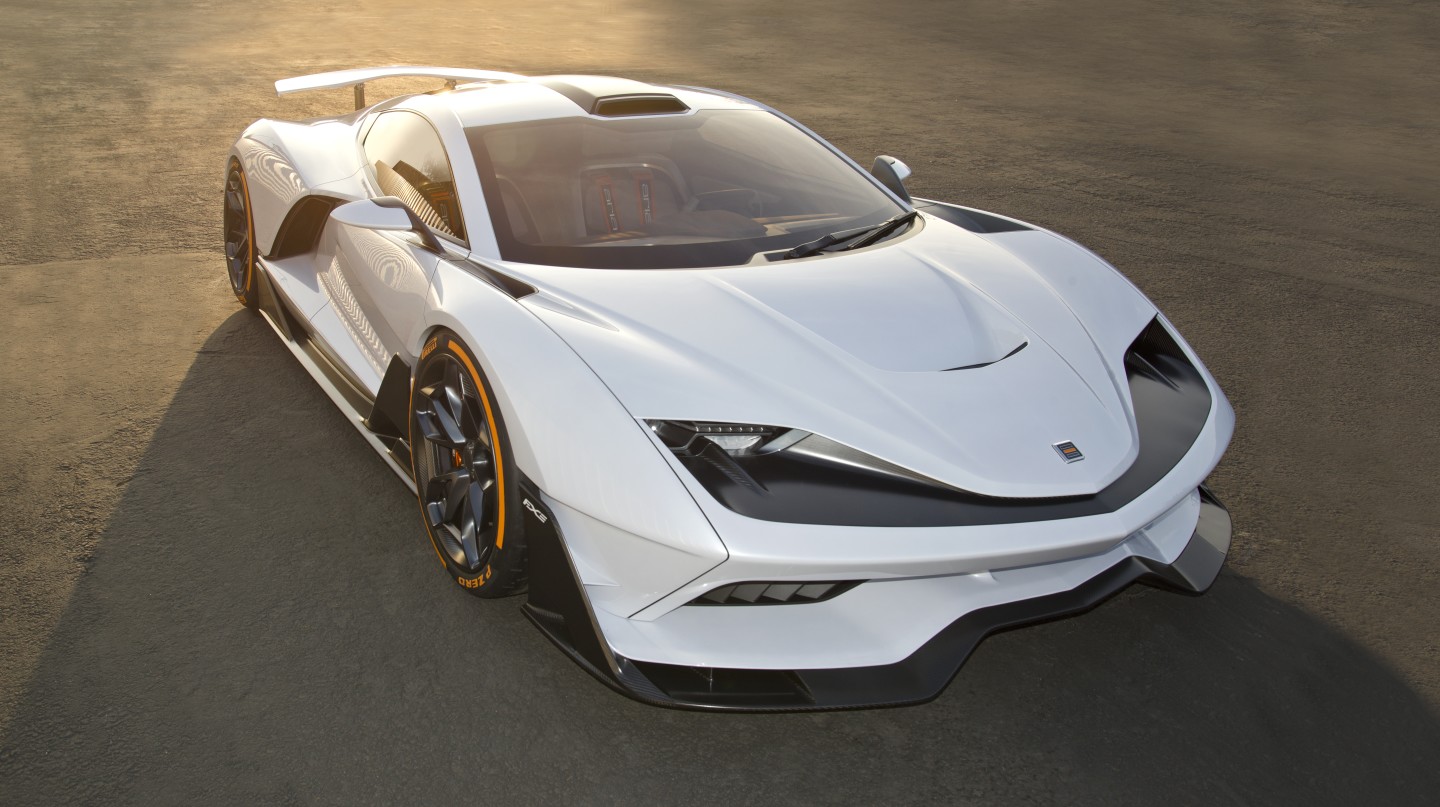
Aria
California-based design and engineering house Aria threw its hat into the ring with the FXE, a hybrid hyper-GT car with an angry look to it and gaping side vents inspired by the F-22 Raptor fighter jet. It’s powered by a combination of a mid-mounted, 6.2-liter, supercharged V8, and a pair of front-mounted electric motors, and it thus accelerates about as fast as a McLaren P1 or Porsche 918, hitting 60 mph (98 km/h) in 3.1 seconds on the way to a top speed of 220 mph (354 km/h).
Learn more about the Aria FXE.
The Aston Martin Valkyrie: 1,160 horsepower (hybrid)
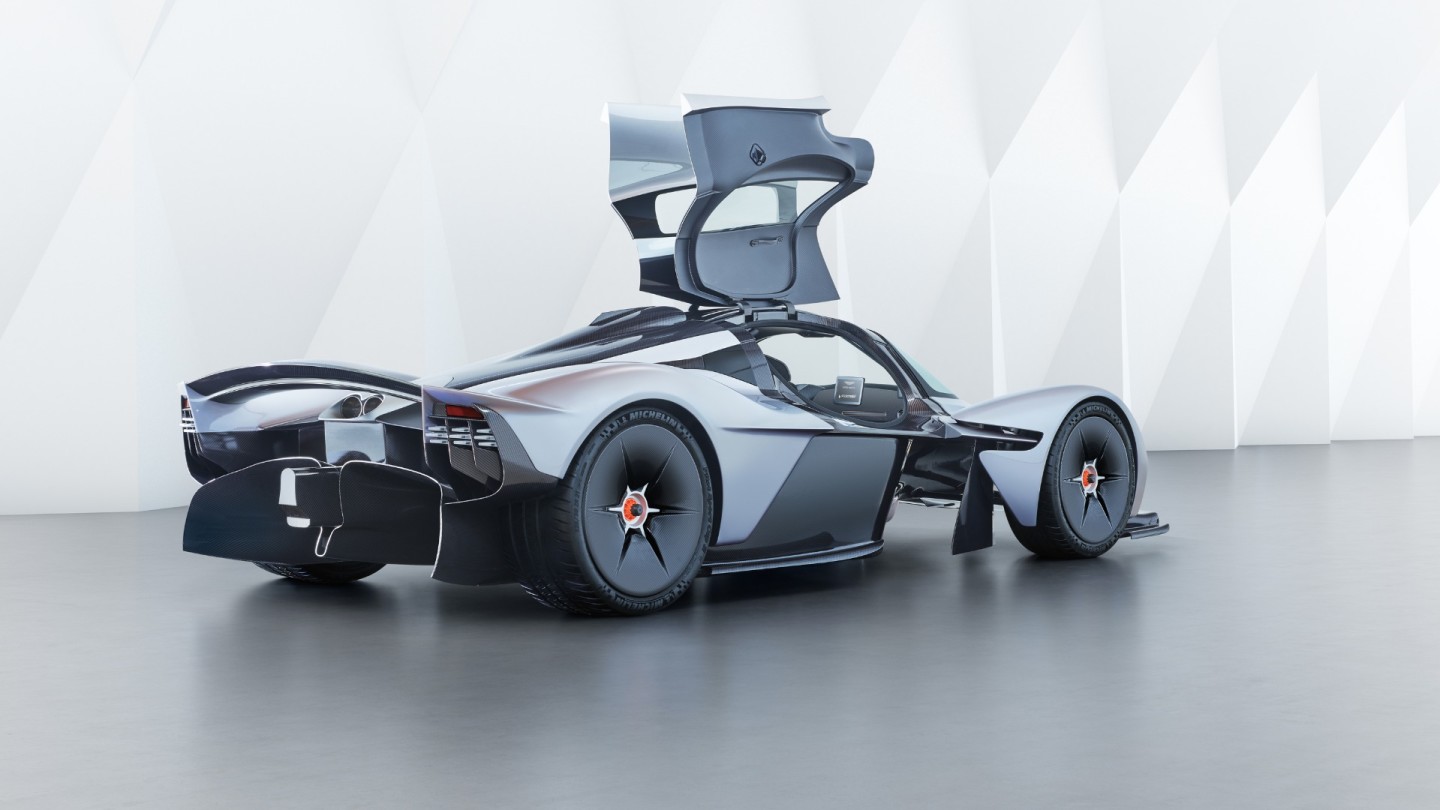
Whoooo mama. The mighty hybrid Valkyrie is getting ready to roll, boasting not only one of the wildest aerodynamic underbody shapes ever seen in the automotive world (thanks, Adrian Newey!), but also a magnificently excessive 6.5-liter Cosworth V12 engine that makes a thousand horsepower all by itself, without the aid of forced induction, just so it doesn’t sound like a wimpy little turbo. The very thought of it gives me chills; of all the very, very special cars on this list, the Valkyrie is far and away my personal favorite due to its absolutely otherworldly shape and its commitment to loud, shouty hybridism.
Learn more about the Aston Martin Valkyrie.
The Zenvo TSR-S: 1,177 horsepower (combustion)
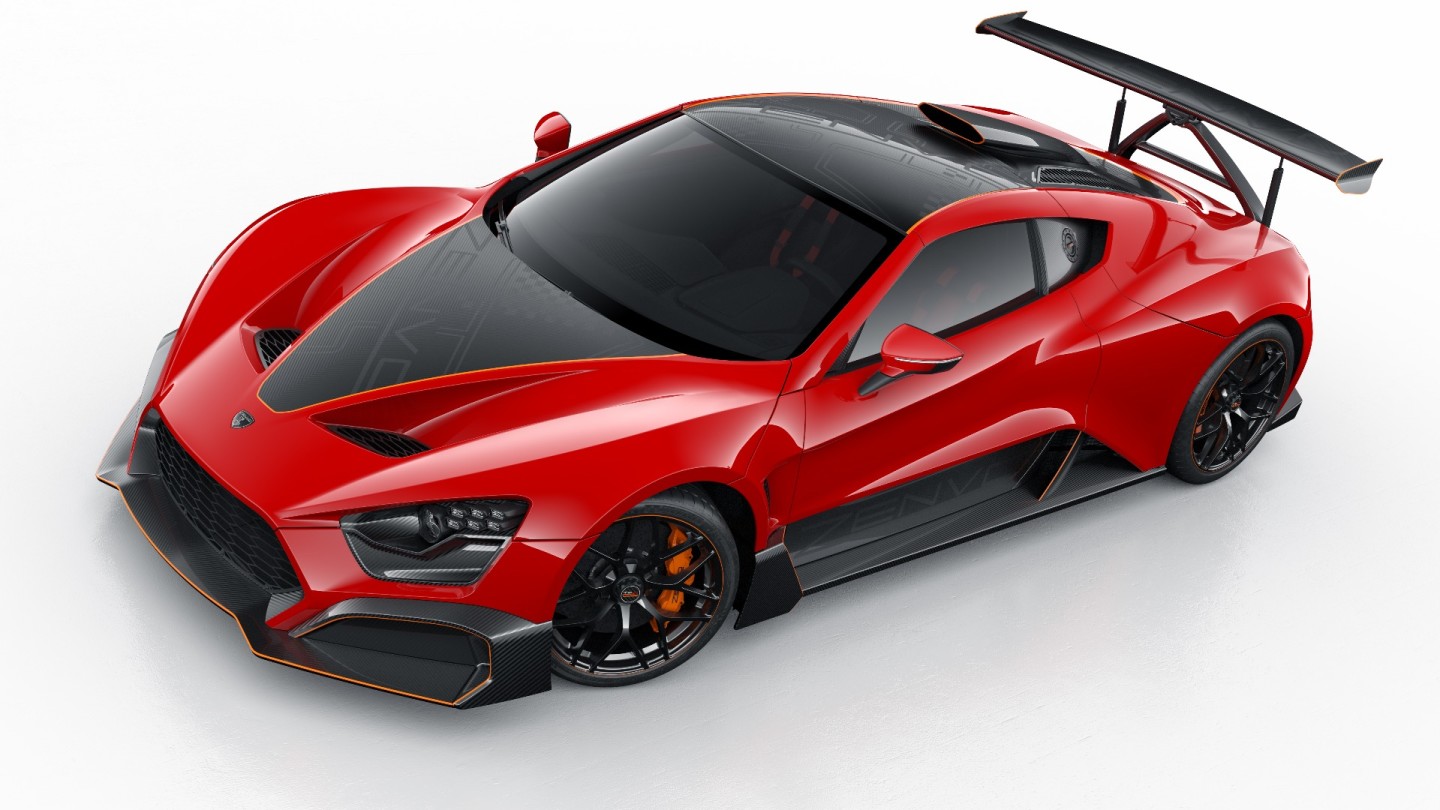
C.C Weiss/New Atlas
You can’t miss the Zenvo at a track day; it’s the one with the gigantic dancing rear wing on a pair of hydraulic struts, which not only tilts forward as a big ol’ air brake, but rocks wildly from side to side as you go into corners, lifting the wing up on the inside of the corner to put more downforce onto the inside rear wheel. It’s a wacky kind of a gimmick, and we can’t see it catching on, but the Zenvo, with its crazy supercharged 5.8-liter V8 engine, couldn’t care less what we think. Put the gearbox in race mode, and Zenvo says “the brutal direct mechanical power-shift gear change is one of the fastest-shifting powertrains in existence.” Eep.
Learn more about the Zenvo TSR-S.
The Ultima RS: 1,200 horsepower (combustion)
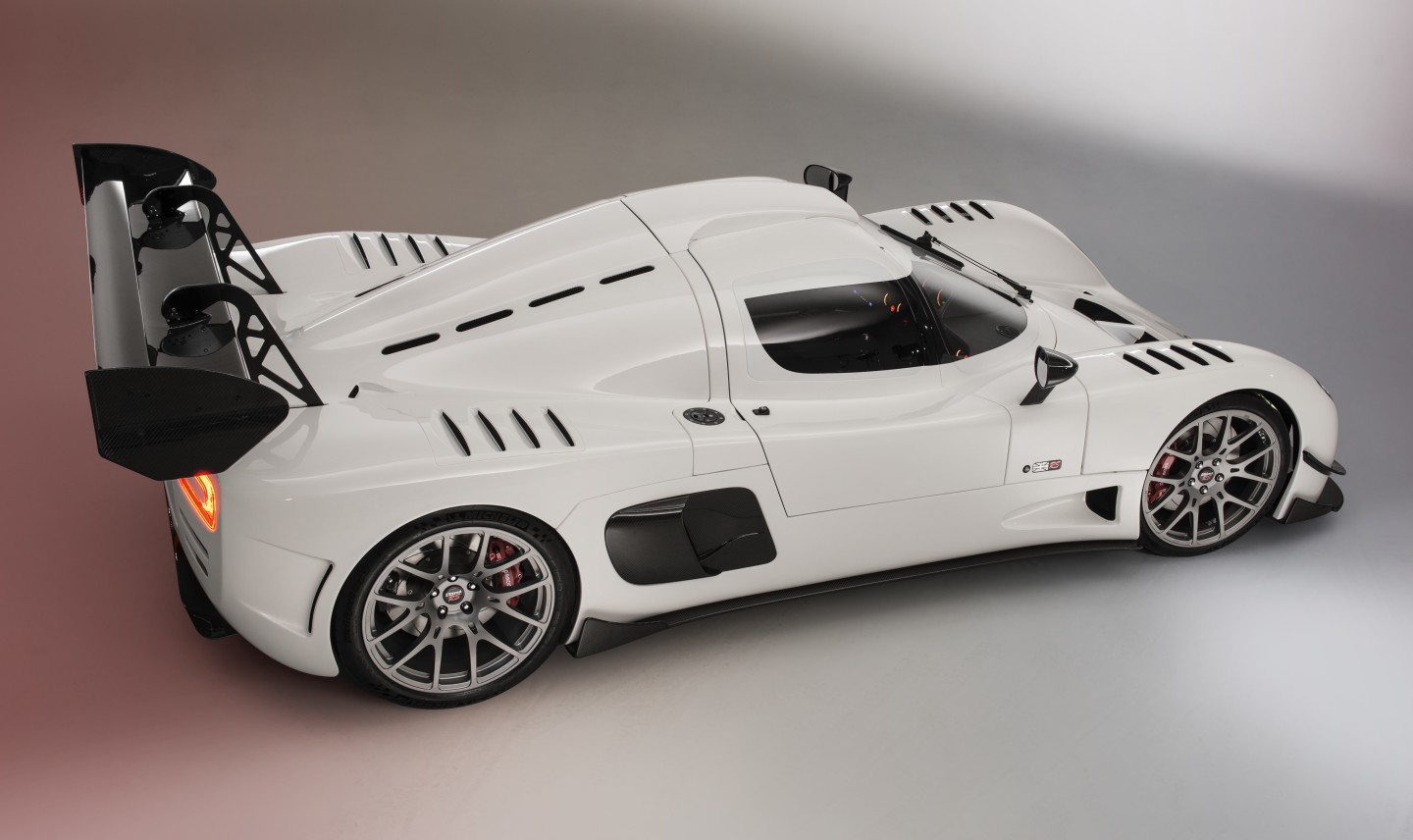
Ultima Sports
The RS is particularly notable for two things: firstly, it’s a kit car, and thus secondly, it’s available for a fraction of the price anything else on this list will cost you. British boutique manufacturer Ultima will sell you a low-spec RS for somewhere around US$120,000, but it only makes it onto this list if you tick the top engine box – a worked-over supercharged Chevy LT5 V8 crate engine that’ll put more than 1,200 horses down through those poor rear Michelins. Those hoops are really the only thing limiting this car’s performance figures: 2.3 seconds for 0-60 mph (0-98 km/h) is well into the realm of electric acceleration, thanks to the Ultima’s insanely light, 2,094-lb (950-kg) weight.
Learn more about the Ultima RS.
The Czinger 21C: 1,250 horsepower (hybrid)
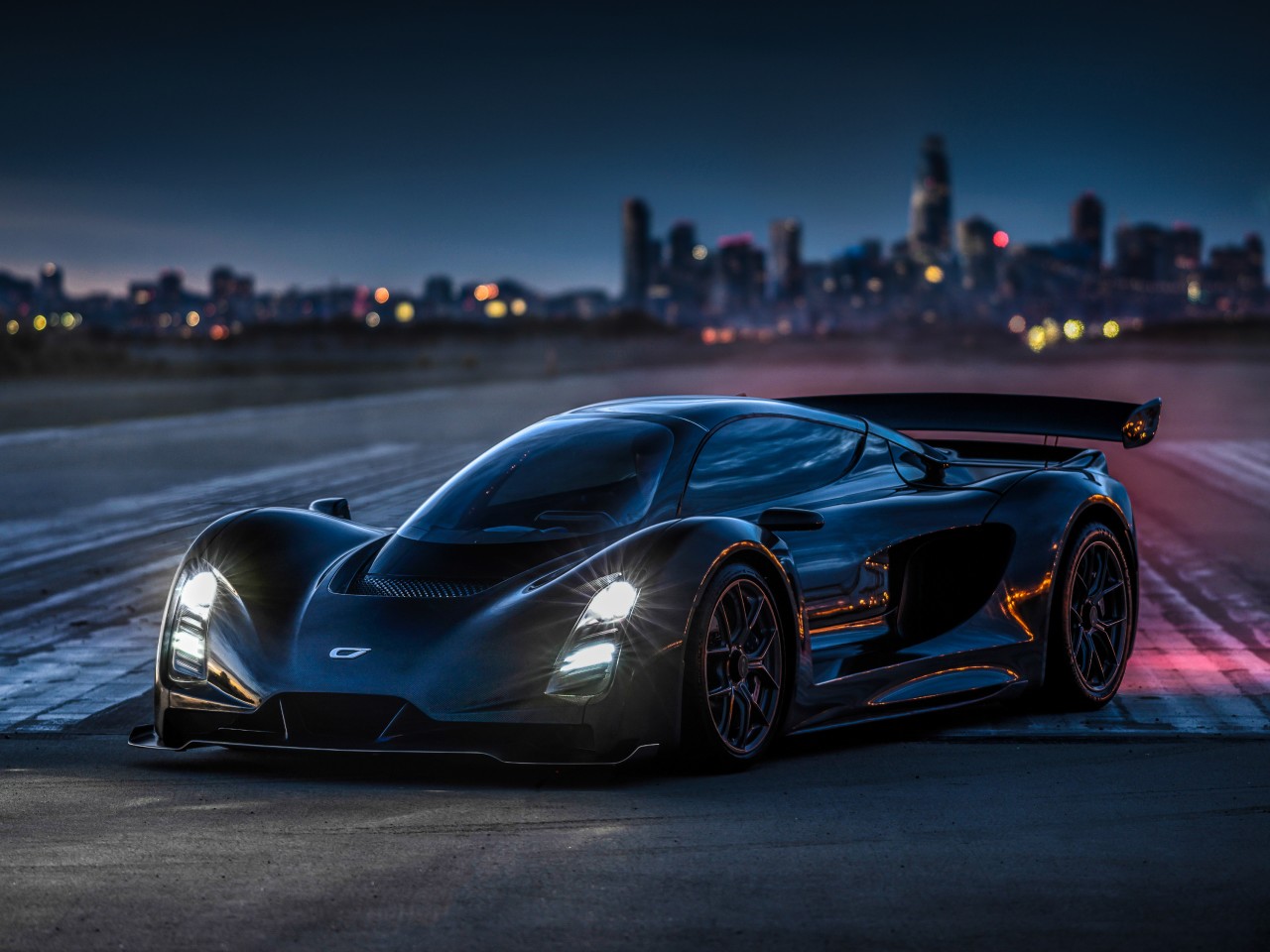
Czinger
A fascinating project out of California, this monstrous batmobile’s enormous horsepower output may be one of the least interesting things about it. Best viewed as a highly updated successor to the Divergent Blade, the 21C is particularly remarkable for its manufacturing concept. The car’s spaceframe is built from carbon rods, linked by 3D-printed aluminum nodes and assembled by robots. Then there’s the cabin layout; two seats, centrally located with the hapless passenger right behind the driver and not able to see much as you rocket your way to 100 km/h (62 mph) in just 1.9 seconds from a standstill.
Learn more about the Czinger 21C
The Koenigsegg Regera: 1,500 horsepower (hybrid)
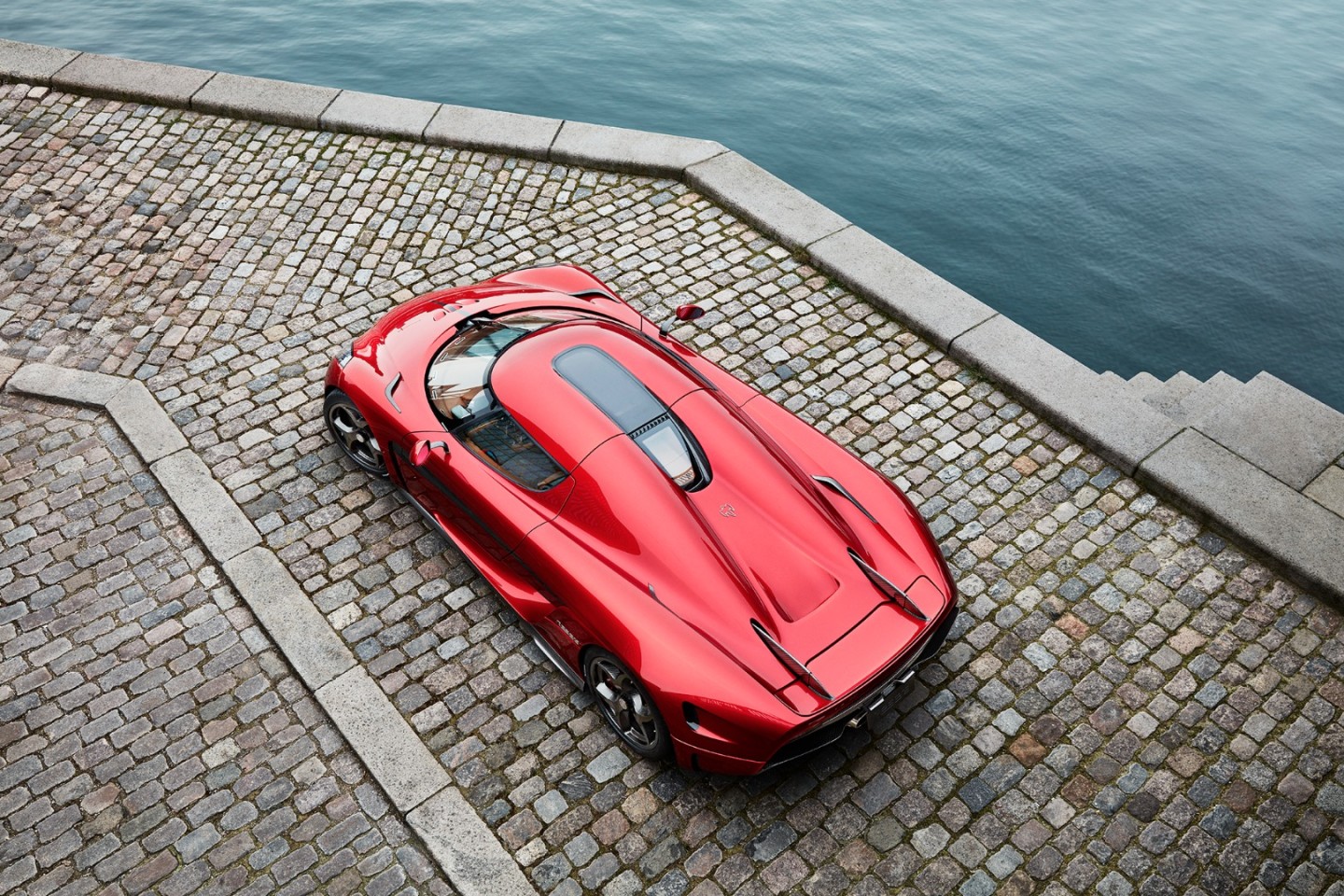
Martin Juul
The first of the Megacars. Though it makes a stupendous amount of power, the Regera isn’t even designed to be the fast one in the Koenigsegg catalog. It’s the luxury alternative, leaving the silly stuff to the Agera and Jesko. Good grief! Power comes from a hybrid system, with an 1,100-horsepower combustion engine in the form of a 5.0-liter twin-turbo V8, and a massive 700-hp three-motor electric system on top. It’s like sticking a Model S drive system in your Bugatti Chiron. Because of the way the power curves overlap, you can’t ever get more than 1,500 horses out of the Regera, but we think you should find that number sufficient for most trips to the shops. And there are so many other remarkable things about this car, from its Direct Drive gearbox-free transmission, to its active engine mounts, to its “autoskin” robotized opening of every orifice the car has to offer so you don’t have to put grubby fingerprints on it.
Learn more about the Koenigsegg Regera.
The Koenigsegg Jesko: 1,600 horsepower (combustion)
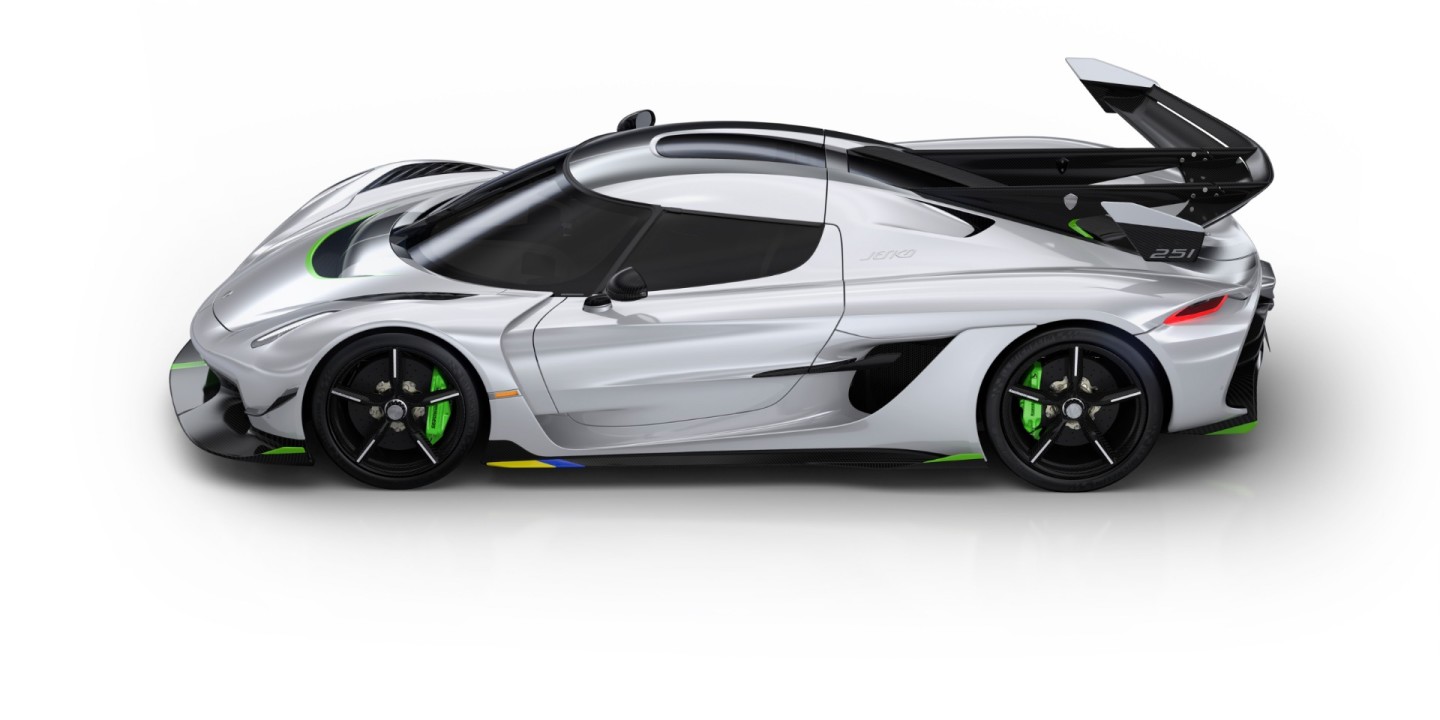
Koenigsegg
After 25 years of making some of the most extreme exotic sportscars on the planet, Christian Koenigsegg finally built one he thought was worth naming after his dad. This Swedish madman has managed to pull some 1,600 ponies out of a 5.0-liter twin turbo V8, or the equivalent of pulling 320 hp out of a 1,000cc motorcycle engine. Turbo lag is eliminated with the use of a system that blasts compressed air into the turbos at 20 psi to wake them up. The gearbox is even cooler: not only can it handle 1,500 Nm (1,106 lb-ft) of torque, its multi-clutch, feather-light 9-speed “Ultimate Power on Demand” transmission can switch from any gear to any other in “virtually no time.” It’s got four-wheel steering. It’s got “dihedral synchro-helix” doors. It’s got a roof you can pop off. And it’s designed to go more then 300 mph, although it hasn’t yet. It’s a monster. And if you want the really fast version, there’s a Jesko Absolut version that ditches the rear wing to prioritize ultra-high speed over downforce. Yikes.
Learn more about the Koenigsegg Jesko.
The Bugatti Chiron Super Sport 300+: 1,600 horsepower (combustion)
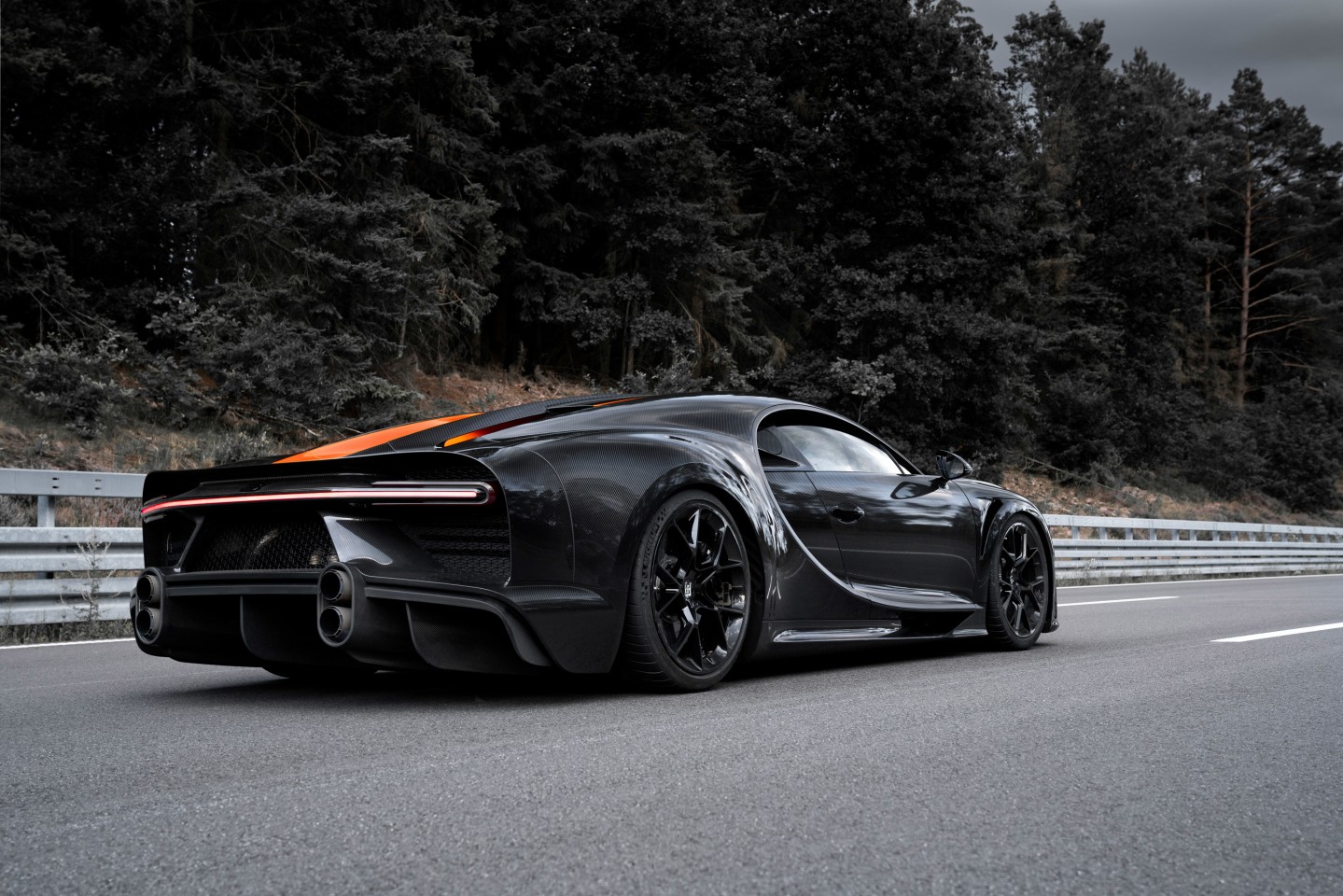
Bugatti
As we get deep into the very serious end of this list, we encounter the current (unofficial) speed champion. The first production car to break 300 mph, with a one-way 304.773-mph (490.484-km/h) run that very sportingly left Koenigsegg and Hennessey the opportunity to fight over who gets to be first to 310.6 mph (500 km/h). This tweaked edition of the Chiron only adds 100 horses to Bugatti’s Veyron successor, but features extended and aerodynamically optimized bodywork that’s significantly more efficient at speeds above 261 mph (420 km/h). We wonder how many of the 30 units to be built will ever get to that speed – and indeed, where exactly they’re planning to do it.
Learn more about the Bugatti Chiron Super Sport 300+
The Koenigsegg Gemera: 1,700 horsepower (hybrid)
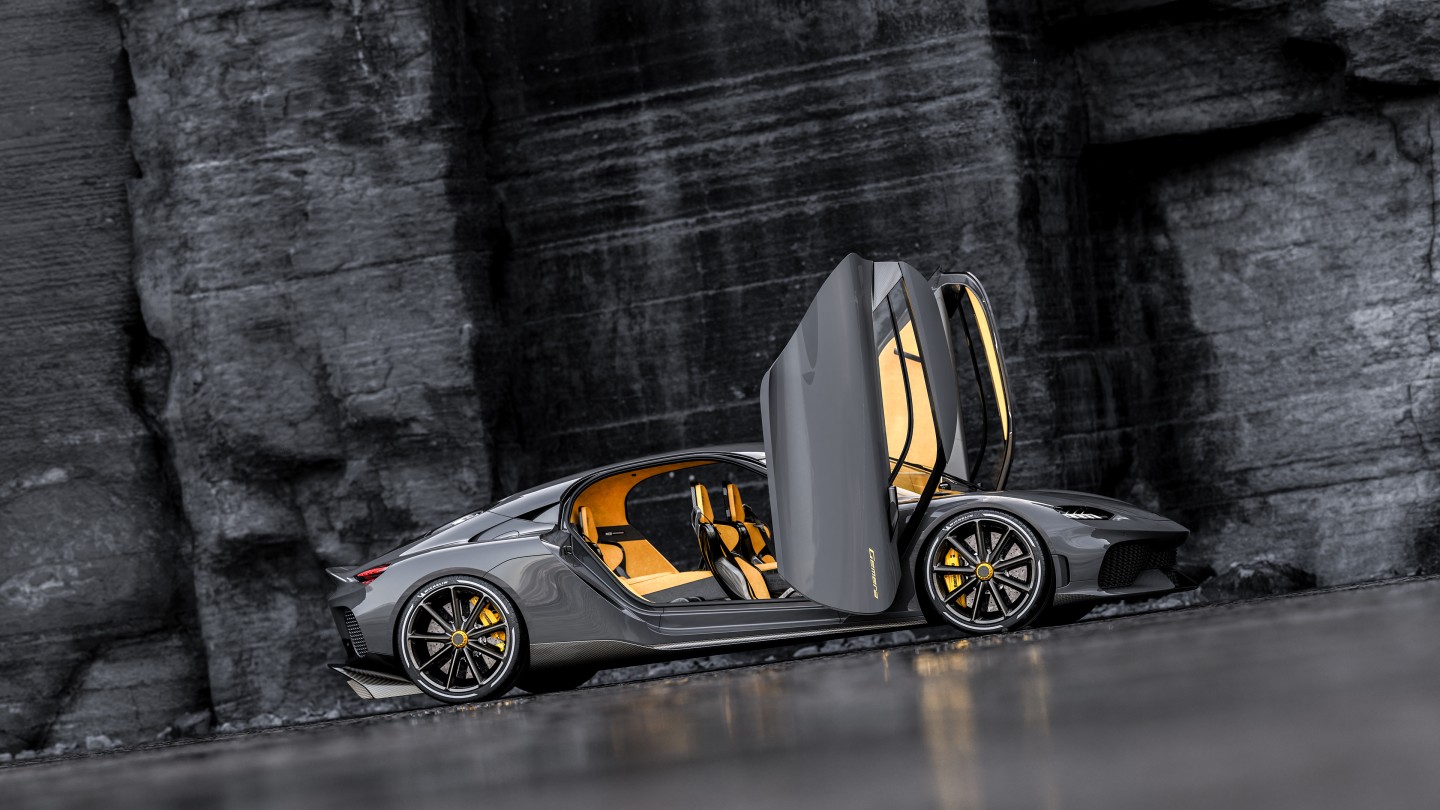
Koenigsegg
One of the sad facts about almost all these monstrously powerful hypercars is that they can only evacuate two bowels at once: those of the driver and a single passenger. Not so with the extraordinary Koenigsegg Gemera, which can unleash the contents of four at a time with the inclusion of an almost sacrilegious pair of back seats. Yes, this is a 1,700-horsepower family hyper-wagon with a genuinely luxurious-looking set of back seats from which the kids can experience top speeds over 400 km/h (249 mph). A 2.0-liter three-cylinder twin turbo engine pulls more than its weight at 600 horsepower, but the bulk of the Gemera’s prodigious muscle comes from its electric motors, and it’s all delivered through a similar Direct Drive transmission as the Regera.
Learn more about the Koenigsegg Gemera.
The SSC Tuatara: 1,750 horsepower (combustion)
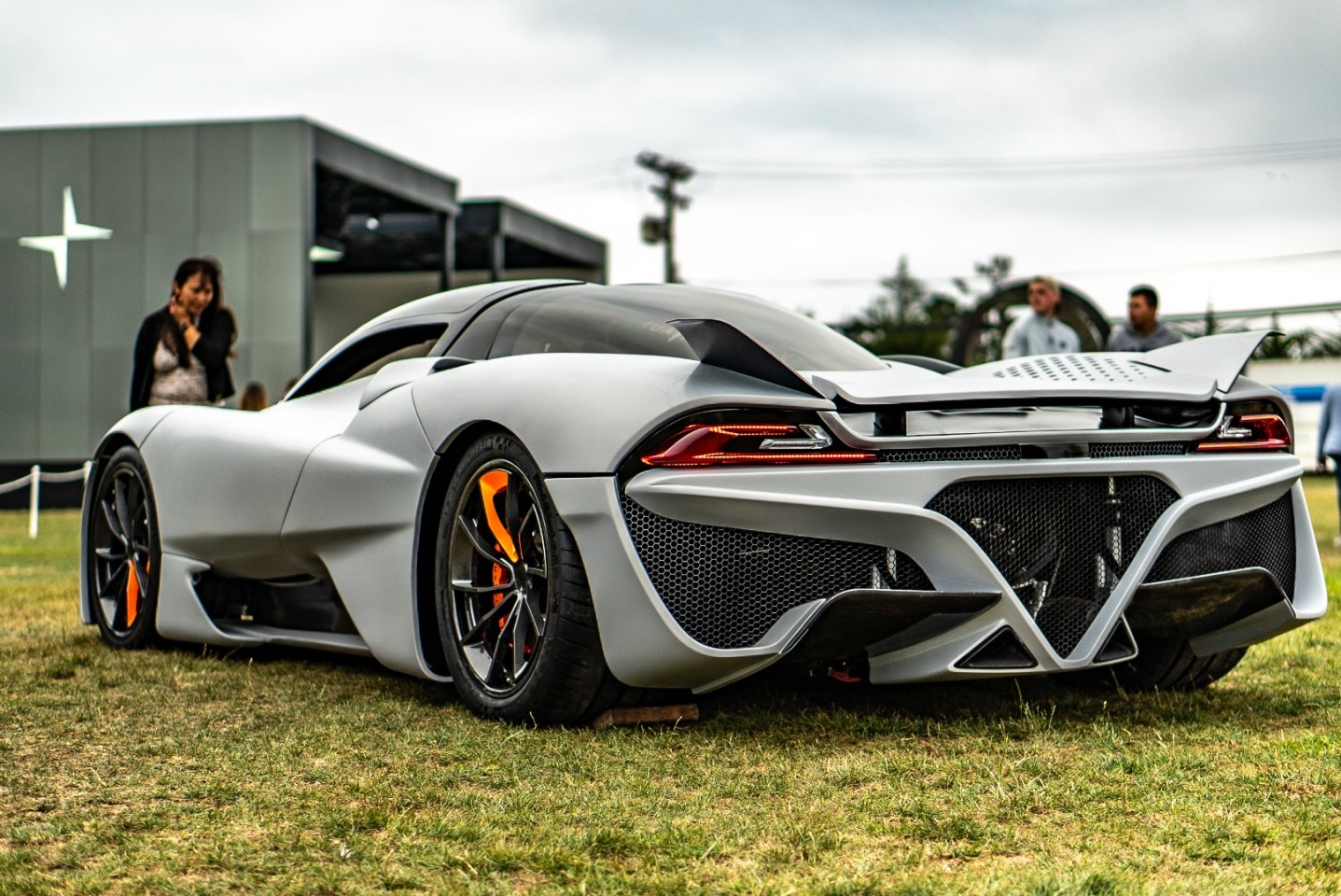
SSC
The Tuatara project has been dragging on for nearly a decade, but the original design Shelby SuperCars (SSC) put forward in 2011 has hardly had to change to feel brutally relevant in 2020. Its 5.9-liter twin-turbo, flat-plane V8 is good for 1,350 horsepower on regular gas, or a ludicrous 1,750 on E85. Carbon on carbon on carbon keeps its weight down to a very impressive 2,750 lb (1,247 kg) and SSC was talking about 300 mph (483 km/h) as a target before Bugatti went and gazzumped everyone. Still, the Tuatara remains a very, very special machine.
Learn more about the SSC Tuatara.
The Hennessey Venom F5: 1,817 horsepower (combustion)
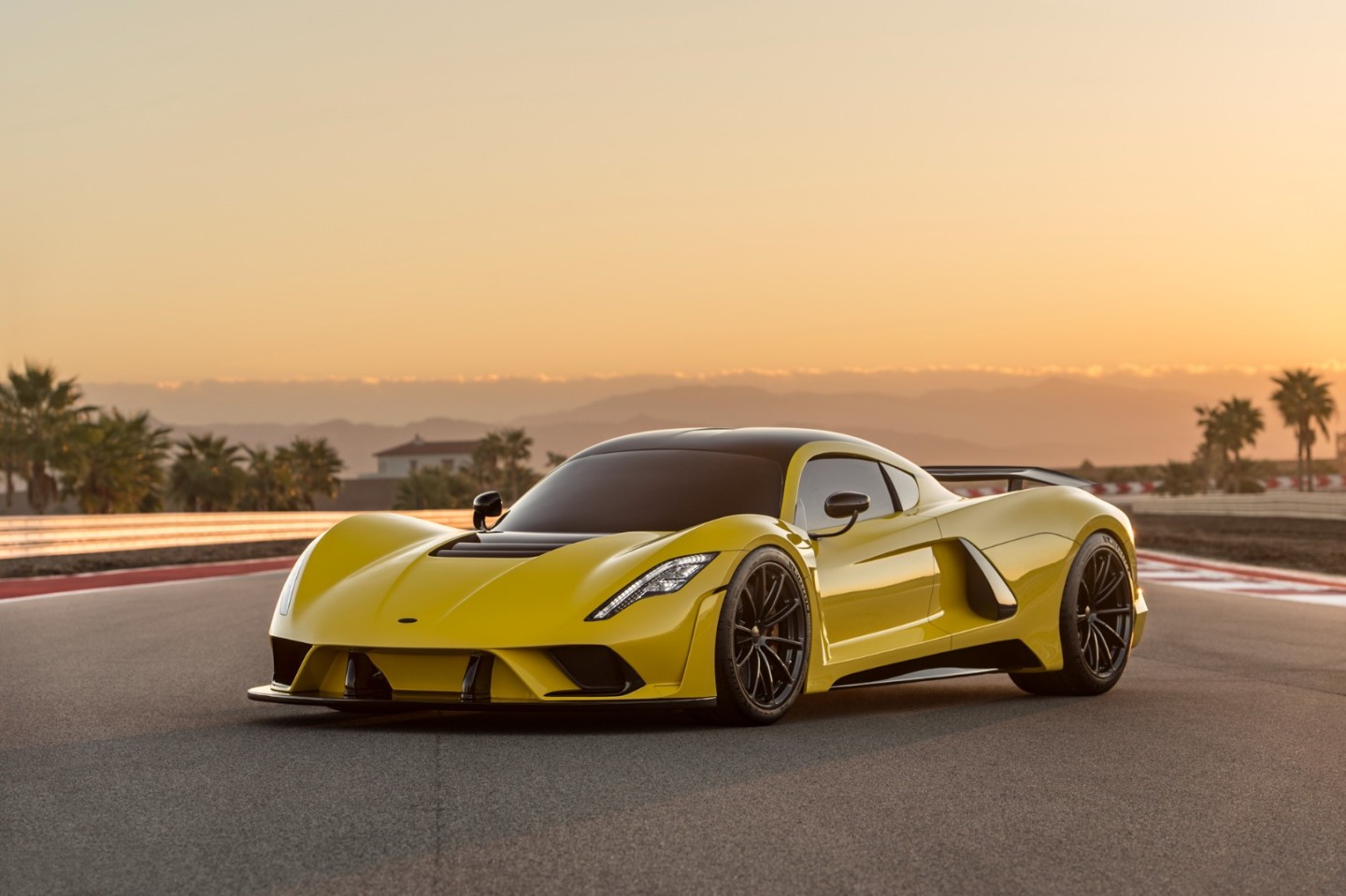
Texan tuning god John Hennessey has been making fast cars faster for nearly 30 years now, and in recent times has also been building his own series of insane hypercars to keep the Europeans honest in the top speed race. Hennessey’s Venom GT held the unofficial 270.49-mph (435.31-km/h) production car top speed record until the Agera RS broke it, and the Venom F5 was built to target the 300-mph mark. Hennessey Performance is yet to put in a top speed run with the F5, but when it does, it’ll unleash the full rage of its “Fury” engine, a 6.6-liter twin turbo V8. Designed to make at least 1,600 horsepower, the Fury engine surprised even John Hennessey himself when it was dyno tested at a colossal 1,817 horsepower. The Venom F5 should hit 186 mph (300 km/h) faster than a Formula One car, it’ll have the highest power-to-weight ratio ever seen in a production car, and Hennessey says it should smash the 0-400-0 test in “under 30 seconds,” which would absolutely obliterate the Koenigsegg’s best effort. USA! USA!
Learn more about the Hennessey Venom F5.
The Pininfarina Battista: 1,900 horsepower (electric)

Pininfarina
From this point on, we leave the combustion world behind. And when it comes to electric hypercars, total power figures can simply get up and wander as far into la-la land as they want. Where combustion tuners need to jump through insane hoops to squeeze more power out of their engines, the electric crew simply needs to deal with a bit of extra heat. Extra power becomes almost a trivial thing to add. The Battista uses a Rimac AWD powertrain specced to 1,900 horses. It’ll get you to 62 mph (100 km/h) in less than two seconds if you’ve got fresh tires on. It’s got a luxury cabin, active suspension and aerodynamics, and a selection of different fake sounds you can choose from if you’re missing the noise of a combustion engine. And of course, as the first machine both designed and built by Pininfarina, it’s absolutely gorgeous to boot.
Learn more about the Pininfarina Battista.
The Rimac C_Two: 1,914 horsepower (electric)
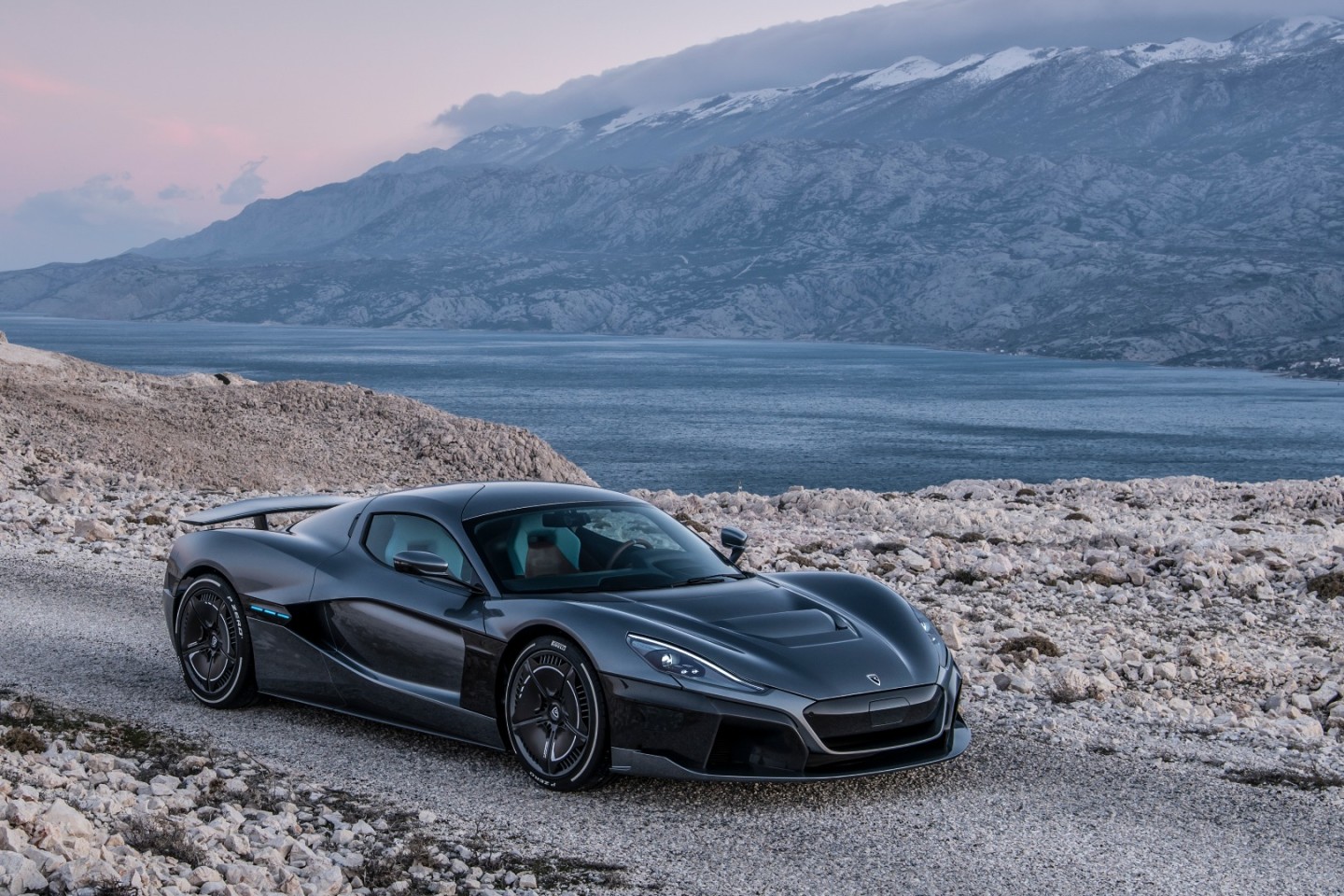
Rimac
Rimac kept a little of the secret sauce in its back pocket when it sold Pininfarina its powertrain. The C_Two makes 1,914 horsepower and a hilarious 2,300 Nm (1,696 lb-ft) of torque. We’re not sure exactly which tires can hold up to that kind of assault, but Rimac says it’ll do a 1.85-second 0-60 mph (0-100 km/h) time and a top speed around 258 mph (415 km/h). Range? 403 miles (650 km) if you drive it like a nanna, or about two laps of the Nurburgring (~26 miles/40 km) if you’ve got the cojones to lay the boot in. The rest of the tech in this thing is ludicrous as well, from its facial-recognition door locks, to its mood-detection system that plays soothing music if you’re stressed out, to racing line and braking point data for a range of famous racetracks. And Rimac says it’ll have Level 4 autonomous driving through an nVidia-powered self-driving system and some 22 MacBook Pros’ worth of on-board computing power. Yikes.
Learn more about the Rimac C_Two.
The Aspark Owl: 1,985 horsepower (electric)
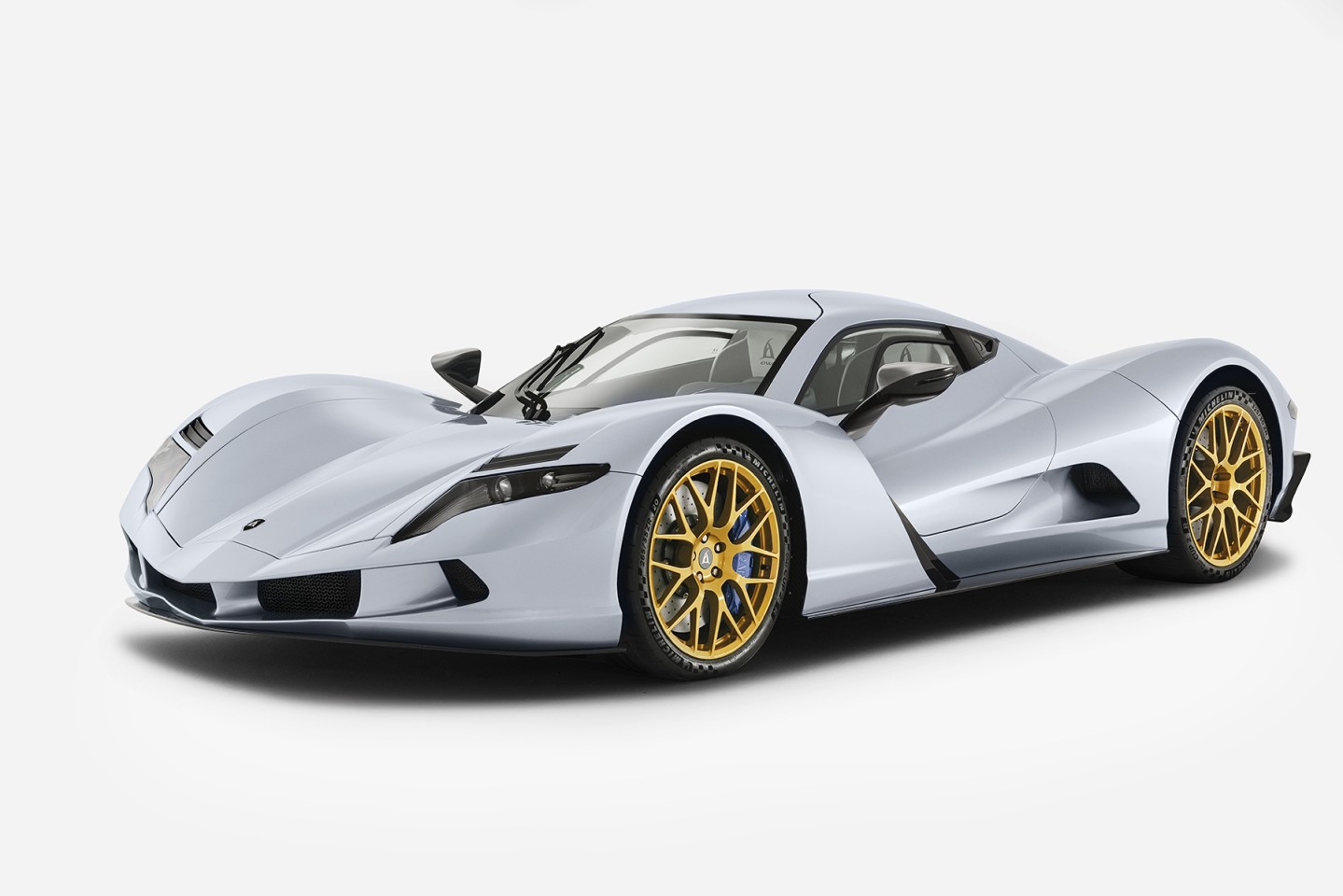
Aspark
Japan’s consumer car market might tend toward more practicality than glamor, but you’d be mad to expect this electronics powerhouse of a country to be left behind as the age of the electric hypercar dawns. The Aspark Owl promises a hilarious 0-60 mph (0-98 km/h) acceleration time of just 1.69 seconds thanks to its wildly excessive, 1,985-horsepower, 2,000 Nm (1,475 lb-ft) powertrain. Aspark says that’s on street-legal tires, too. Good grief. Top speed is limited at a fairly sprightly 400 km/h (249 mph), and the whole car is less than a metre (3.3 ft) tall, and one of the lowest riding cars on the planet. Yours for around about US$3 million, if you can get hold of one of the 50 being made. That price is, of course, before you add options.
Learn more about the Aspark Owl.
The Lotus Evija: 2,000 horsepower (electric)

Lotus
And here it is, folks: King Dingaling. The first production car making two thousand horsepower. “E-vi-ya” is how you’re supposed to pronounce it, and this 2.1-million-dollar beauty is another all-electric beast ready to give you 1,700 Nm (1,254 lb-ft) of electric torque any time you’re insolent enough to ask for it. Williams Advanced Engineering has contributed to the project, helping ensure you can drive this thing flat-out for around seven whole minutes before temperature starts to limit the performance. It’s also designed to charge at an insanely fast 800 kW, meaning that when the infrastructure gets invented, you’ll be able to charge the Evija from 0-100 percent in just nine minutes. In track mode, the Evija will actually add power to the outside rear wheel if it thinks a touch of drift will help you tighten your cornering line, and its giant venturi-tunnel air scoops are big enough for your cats to play tag in.
Learn more about the Lotus Evija.
An honorable mention must go to the 5,221-horsepower electric Alieno Arcanum from Bulgaria, which features robotic everything, a 303-mph (488-km/h) top speed, and the longest list of outrageous promises we’ve ever seen in a press release. It would take top spot on this list if we thought it had the slightest potential of being a real thing, and we thoroughly encourage you to go and read about it, because it’s extremely entertaining and – if we’re honest – about as likely to find its way into your garage or mine as any of these other machines.
Have we left anything out? Please let us know in the comments below if we have, and we’ll happily fill the list in. If you like really, really fast cars, there has never been a better time to be alive – or a worse time to be alive and not have millions of dollars to spend on hypercars.
Jump into our hypercar gallery for extra shots of each of these dream machines.
Editor’s note: This article was originally published in September 26, 2019. The revised and updated version was published on September 10, 2020.
Source of Article